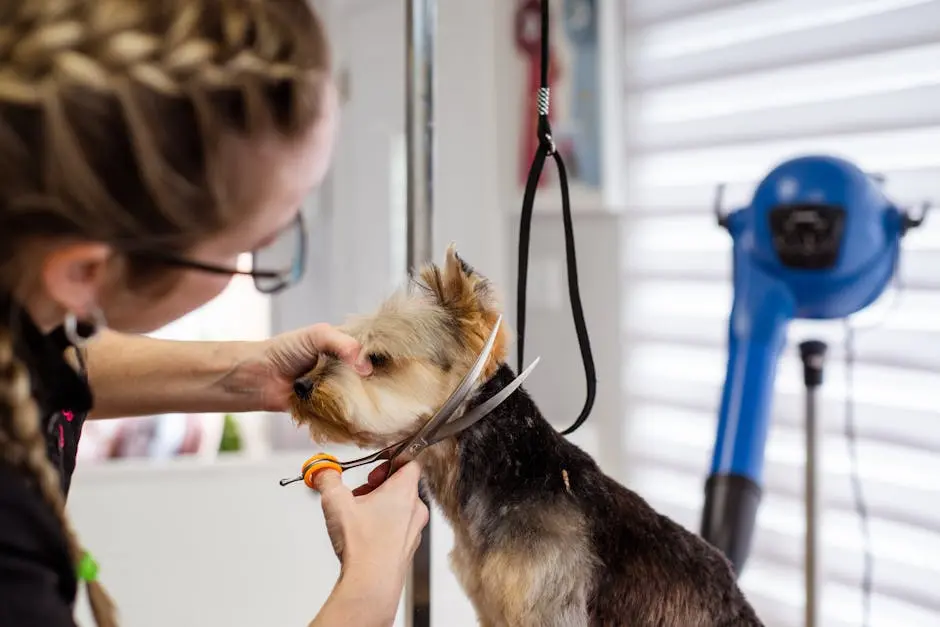
What Should I Do If My Pet Is Anxious About Animal Grooming?
Grooming is an essential part of pet care, but it’s not uncommon for pets to feel anxious about it. Understanding how to ease your pet’s anxiety can make the grooming process smoother for both of you. In this guide, we’ll explore practical steps to help your furry friend feel more at ease during grooming sessions.
Understand Your Pet’s Anxiety Triggers
Every pet is unique, and understanding what triggers anxiety in your pet is the first step toward easing their discomfort during grooming. Common triggers can include loud noises, unfamiliar environments, or even certain grooming tools. Spend time observing your pet’s reactions to different situations to identify specific triggers.
For example, if your dog becomes anxious when you turn on the clippers, that sound might be a significant trigger for them. Tracking these reactions over time will empower you to take steps to counteract these stressors during grooming sessions.
Don’t forget that sometimes, the anxiety may stem from previous negative experiences. If your pet has had a traumatic grooming session in the past, they might associate it with fear. Understanding their history will help you create a more comfortable experience.
To truly understand your pet, consider keeping a diary to jot down moments of anxiety as they happen. This method will allow you to pinpoint triggers and plan accordingly.
Find a Calm Environment
One of the simplest yet most effective ways to reduce anxiety in pets is to find a less-stress groomer. Start by choosing a groomer who encourages less barking and anxiety from other dogs while maintaining a calm atmosphere.
Ask the groomer if you can bring familiar items, like their favorite blanket or toys to make the space feel safe and inviting. Familiar scents and objects can ease your pet’s nerves, promoting a sense of security during grooming.
Moreover, your groomer should be playing music or using white noise that can drown out jarring sounds. This soothing background noise can help mask the sounds of grooming tools that might otherwise trigger anxiety.
Lastly, your groomer should maintain a gentle and positive demeanor. Pets are incredibly perceptive and can pick up on human emotions. Calmness will help reassure them, creating a more relaxing grooming experience.
Desensitize Your Pet to Grooming Tools
Desensitization is a powerful tool when preparing your pet for professional grooming. Introduce grooming tools at home and ensure your pet associates them with positive experiences. Start with just showing them the tools while giving treats to create a positive association.
Once your pet seems comfortable with the sight of the tools, introduce them to the sounds they make. For instance, you can gently turn on clippers (or use an electric toothbrush as a good stand in) while giving your pet a treat, allowing them to get accustomed to the noise in a stress-free manner.
As you progress, simulate the grooming process without actually using the tools. For instance, brushing your pet’s fur with your hands can help them adapt to the sensations without the anxiety associated with sudden movements of the tools.
Remember that patience is key. Rushing the desensitization process can lead to increased anxiety. Take your time, and celebrate the small victories along the way!
Use Positive Reinforcement Techniques
Positive reinforcement can significantly alleviate your pet’s anxiety during grooming sessions. This technique involves rewarding your pet with treats, praise, or affection when they remain calm during grooming rituals.
For example, you might start brushing your pet for just a few seconds, followed by immediate treats and praise. Gradually increase the time spent grooming as your pet becomes more comfortable, ensuring to reward them consistently.
Additionally, using a calm and soothing voice can work wonders. Speak to your pet reassuringly, making them feel safe and appreciated during the grooming process.
Avoid using negative reinforcement, as this can heighten the anxiety rather than alleviate it. Building trust with gentle, positive interactions is vital, and over time, your pet will begin to view grooming as a positive experience.
Know When to Seek Professional Help
If your pet displays signs of extreme anxiety that you cannot manage, it might be time to seek professional advice. A groomer experienced with anxious pets can provide specialized support and techniques tailored to your pet’s needs.
Moreover, veterinary behavioral specialists can offer insights and training plans to help your pet feel more at ease, and can discuss the option of anxiety-reducing medications if appropriate. These professionals evaluate your pet’s condition and work towards a solution that prioritizes their well-being.
Always prioritize your pet’s comfort. Stress during grooming can lead to long-term anxiety, so reaching out for help sooner rather than later can make a significant difference.
With the right support and strategies, most anxious pets can learn to feel more comfortable with the grooming process over time, leading to a more pleasant experience for both of you.
Final Thoughts on Grooming and Your Pet’s Comfort
By taking these steps to address your pet’s anxiety about grooming, you can create a more positive experience for both of you at the salon. Remember to be patient and attentive to your pet’s comfort levels.




